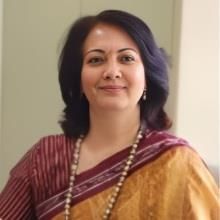The demand for sustainable practices in the textile industry has been rising in recent years, driven by growing consumer awareness and concern for the planet. This shift also reflects a long-overdue recognition of the severe environmental damage caused by modern textile manufacturing, processing, and finishing. Today, these processes often use more chemicals than textile material itself.
Apart from other elements or practices involved in the textile value chain, textile wet processing—including dyeing and printing of the textile—accounts for a major part of the pollution caused by the entire series of steps in the value chain. Hence, optimum utilisation of natural and eco-friendly materials and practices is required, targeting this stage in the textile value chain.
This has paved the way for natural dyes, bio-mordants and safe auxiliaries to re-enter the manufacturing landscape for a comparatively sensible and conscious business ecosystem in the fashion and textile industry. Given the wide range of natural dyes, mordants and auxiliaries available for commercial application, it is not an alien concept for large scale implementation in the dyeing and printing industries. However, there are certain factors which render natural dyeing and printing almost non-competitive to the synthetic and chemical-based dyeing and finishing processes.
Industrial Landscape
Consumer behaviour in the fashion industry is dynamic, ever evolving, and highly volatile. This volatility becomes more pronounced in niche segments such as sustainably produced clothing, where premium pricing and design limitations play a role. The slower growth and adoption of sustainable fashion brands are, therefore, understandable.
For most consumers, the appeal of a garment begins with its look and feel. Ethically made products often struggle to match the vibrant colours and striking aesthetics of synthetic fabrics and dyes. Yet, growing consumer awareness and education about ethical production have begun to shift perceptions. These efforts are helping to strengthen demand and sustain the financial viability of the slow fashion industry.
However, as far as the visual appeal of the clothing item is concerned, consumers do tend to desire a certain uniformity in their products, which for them, is a measure of its quality. Although the irregularities and unevenness are accepted as a trademark of handcrafted goods and a proof of natural materials and processes used, certain consistency is required in some elements of the design such as the weave of the garment, texture pattern, colour, dyeing intensity, print pattern consistency and intensity of colours, embellishment pattern uniformity and uniform overall construction details. These parameters are fundamental for quality assurance and for a brand to maintain its USP and build a strong customer equity and brand image. If there happens to be lot-to-lot variation and changes in the colour, texture, intensity of colour or other elements of design in the garments, even slight variations could be disappointing to the consumers, leading to complaints, returns, wastage of resources and overall bad performance of the business. To tackle this problem in textile dyeing, Pantone has been highly efficient in minimising this risk by standardising fabric dyeing processes and ensuring operational efficiency by maintaining colour uniformity through a series of procedures.
This involves the colour formula development or lab dips using a spectrophotometer to analyse a provided standard pantone colour code and then develop a precise dyeing formula with the usage of dyestuffs and a specific Material to Liquor Ratio for colouring textiles. Various lab dips are performed to ultimately figure out a perfect colour match for the pantone shade provided. This technique has been prevalent for synthetic dyestuffs in the textile industry. The use of a standardised colour-matching system for natural dyes, using bio mordants and natural auxiliaries, has not yet been adopted in the industry.
Need for Standardisation as a tool for Quality Control
The commercialisation of natural dyes is not new, but the scaling up of those industries and a reliable business model built around entirely ethically made clothing is still a challenge to many brands across the world, which can be overcome by developing appropriate standards or techniques devised for dyeing, specific to each fibre type, natural dyestuff, mordant and auxiliary combination used.
However, there is a void in the availability of standard colour reference model for natural dyes and the post-dyeing colour fastness and other quality parameters for the same, including the methods to attain a specific approved level of colourfastness for naturally dyed or printed clothing. The standardisation of various fibre-dye combinations with set amount of dyestuff, fabric weight, MLR, mordanting method etc used with shade cards for reproducible colour yield, commercial application is required to increase the credibility of natural dyeing procedures. The uniformity of output is the main concern for naturally dyed and printed clothing, with lot variations occurring due to seasons, climatic conditions, weather, difference in dye stuff quality and many other factors, with repetitive colour yield being frequently unattainable.
There are no set standards or criteria for the use of materials or processes involved in naturally dyeing clothing listed under International Organization for Standardization (ISO) yet. There are also no standards or parameters outlined for maximum or optimised colour yield for natural dyes and pigments. The Pantone colour matching system codes do not often align with the shades obtained after natural dyeing, and there is a lack of separate colour shade card or code system for ascertaining the required shade and proceeding with the development of the same.
A consistent, reliable set of information concerning natural dyestuffs quality, methods, dyeing process variables, dyeing kinetics and fibre-dye compatibility, suitable mordanting techniques, concentration of mordants etc is not yet available extensively for reproducing any specific shade or colour from natural colourants.
The colour fastness properties of textiles with respect to washing, rubbing or crocking, light, sweat or perspiration (both acidic and alkaline) and saliva can be tested using various ISO standards like ISO 105 E04, ISO 105 × 12, ISO 105 C06 A1 M and ISO 105 B02. However, the attainment of such colour fastness properties in textiles dyed naturally is not backed by a standardised roadmap yet.
Latest Propositions in the Industry
India is soon going to set up a committee for formulating the certification protocol with regards to the standardisation of the manufacturing process of natural dyes. This is an appreciative feat in the industry as the Bureau of Indian Standards (BIS) will develop a natural dye/ naturally dyed product mark which will enhance the regularity in production of natural dyestuffs and operational efficiency in their application and usage. The natural dyes mark is expected to cover some products including denims, inks or other fabrics which are naturally dyed. A Lucknow based manufacturer, Yawer Ali Shah will be the Head of the committee and convenor of the panel.
Potential Scientific Techniques to aid the Standardisation Process
The verification of the dye and its contents through chromatographic analysis, colorimetry, spectroscopy, or the use of a spectrophotometer could be done for analysing the characteristics of any specific natural colourant. UV-visible spectroscopy is an analytical technique which uses the ultraviolet and visible spectrum electromagnetic waves to analyse the characteristics of components of the sample, including the concentration of the dye molecules by revealing the amount of light absorbed or reflected. The ultimate calibration of the visible spectrum can be used to calculate the dye content, and hence, the required shade depths of natural dyes can be produced by formulating the recipe accordingly. This set of information can be then made accessible through a universal database system which can be used from anywhere around the world. This procedure can be used to authenticate any known dye powder by matching it with the information and standardising the price for the same.
The colour strength value (K/S), or the substantivity or exhaustion co-efficient is a measure of the affinity of the dye and the fibre. It indicates the strength with which the dye is attracted to and absorbed by the fibre while dyeing. It is the measure of equilibrium state or the saturation of dyeing constant. In colorimetric analysis, various colour measuring instruments like colorimeters and spectrophotometers are used to obtain this colour strength value or K/S value, along with dye concentration to ascertain the colour of a dyed textile in objectively quantified units for appropriate colour matching and dyeing efficacy. This technique needs to be regulated and implemented as a part of universally accepted set of parameters for dyeing and printing with natural colourants. This will also highlight dye uptake (higher k/s value means greater dye absorption) and resolve uneven dyeing patterns across different batches or lots.
There are several factors which when manipulated, could result in variation of the dye uptake by the fibres, such as the pH value of the dye bath, use of buffered solution for obtaining a desired pH, temperature of extraction, optimisation of extraction time and dyeing time, ash value and particle size etc. Standardisation of these factors underlining the yield specific to each condition of these set of factors would be highly constructive in reproducing good colour yield from natural dyes in large-scale commercial set-up.
Certified Market Players in the Standardised Natural Dyeing and Printing Sector
Various brands such as Color Ashram, Biocolor, BioDye etc have developed their own patented technologies and shade cards for universal usage and attainment of uniform shades with their respective processes, in compliance with ISO verified colour-fastness measurement standards. Color Ashram, for example, uses a set of methods for formulating dyestuff and obtaining uniformity, which makes their dyes scalable and reliable.

-b_Big.jpg)


